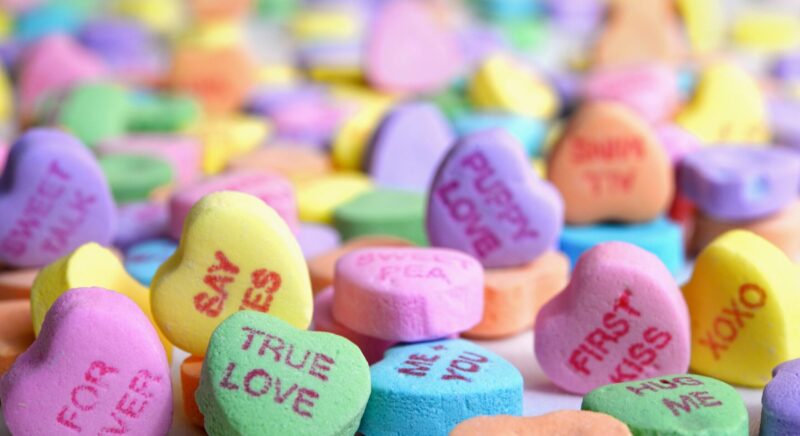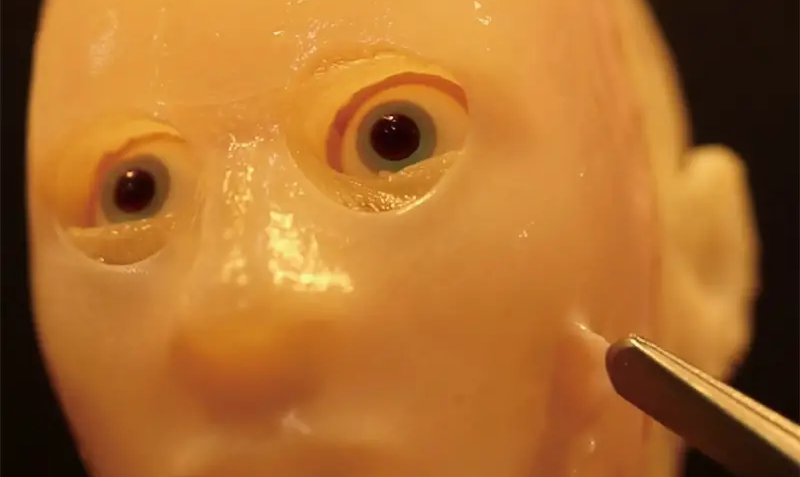Holidays and celebrations are no joke in America. For any given holiday, candies, foods, and decorations are rolled out in stores nationwide, months in advance, to help everyone prepare for commemorations. Holidays like Halloween, Christmas, and Valentine’s Day each require ample amounts of chocolate. Although, why do Valentine’s Day festivities feature those little heart-shaped goodies made of a sugary, chalk-like powder? Where did those come from?
These little gems, known plainly as conversation hearts or candy hearts, are actually named Sweethearts. It all started in 1847 when a 26-year-old English man named Oliver R. Chase invented and patented a machine designed to cut lozenges. “Chase had been making lozenges by hand for apothecary shops, and – true to the times – he invented this machine to keep up with demand.” (candystore.com) Years later, in 1850, Chase invented and patented a machine that pulverized sugar—and the rest was history. Oliver Chase went on to establish his own company and factory, Chase & Co., which “was the forerunner to the family of companies now known as Necco.” (The Library of Congress) Sweethearts were being manufactured by Necco for over a hundred years until the company was eventually bought by Spangler Candy Company in 2018. Production began with Chase & Co. distributing candies resembling Necco Wafers, a thin, flat, sugar-based candy until his brother had another idea.
In 1866, “Fourteen years later, Oliver’s brother Daniel designed a machine that stamped words directly on the candies with red vegetable dye.” (Smithsonian Magazine) Between 1866 and 1901, these candies had several little messages that changed depending on the theme. You could find them at weddings fashioned with romantic sayings and even at sporting events, stamped to look like different sports balls. By the early 1900s, tiny hearts had established their place as the number one shape. “The ingredients in conversation hearts are simple: sugar, corn syrup, gelatin, gums, coloring, and flavoring.” (Spoon University) This is how it began, and not much has changed since its inception over a hundred years ago. Although, why are they marketed and sold on Valentine’s Day?
According to Food Network, “More than eight billion Sweetheart candies are sold in the six weeks leading up to Valentine’s Day. In order to make enough, production begins almost a year in advance, in late February, and continues until mid-January.” Sweethearts makeup 40 percent of Valentine’s Day candy sold, with the number one seller being chocolate—no surprise. It’s no wonder Necco and now Spangler solely focuses on selling these during Valentine’s Day. Considering they are a knockout, making up almost half of what is sold during Valentine’s Day alone, it sure takes a lot of time for production. Hauling out over eight billion Sweetheart boxes takes pretty much a year’s time. How could they do anything else? Also, why would they?
No matter how simple this sweet, little chalk-like candy is, it sure gets the job done. While production takes a year, the sales more than make up for this extensive production process. The story of these beloved candied Sweethearts goes to show: just because it’s simple doesn’t mean it’s not going to work. Sweethearts continue to alter some of their phrases to stay with the times. However, their successful recipe essentially remains the same. If it ain’t broke, don’t fix it!





